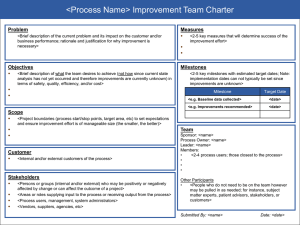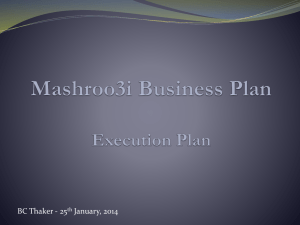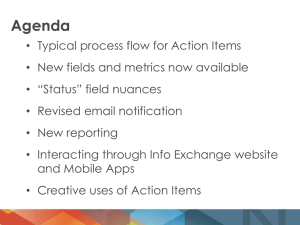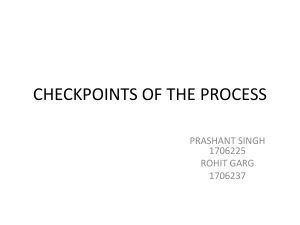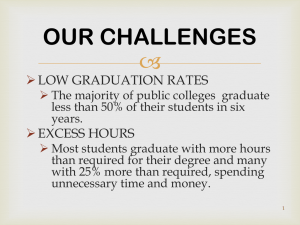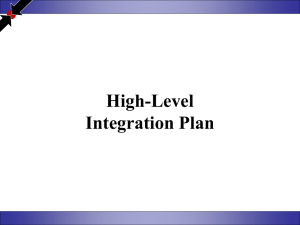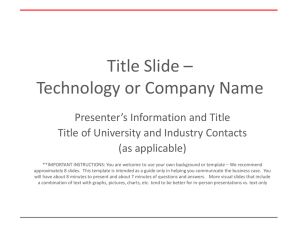WashU GME Edgar 2714
advertisement
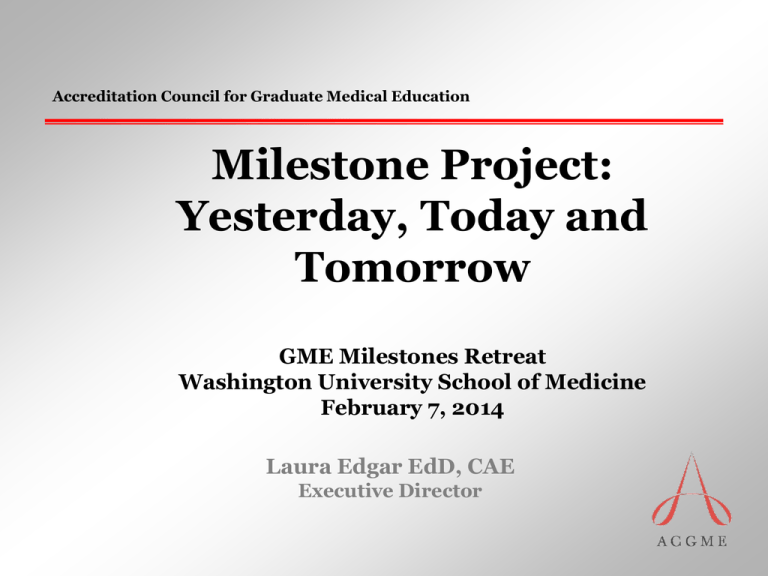
Accreditation Council for Graduate Medical Education Milestone Project: Yesterday, Today and Tomorrow GME Milestones Retreat Washington University School of Medicine February 7, 2014 Laura Edgar EdD, CAE Executive Director Disclosures • Full time employee of ACGME 2 Presentation Topics • • • • • Milestone Background and Purpose A Broader View Design Where Are We Now What’s Next 3 Milestones Yorkshire Moors Via Ignatia Portadon Ireland Gemas Malaysia Key West, FL County Cork Milion of Constantinople Boston, MA Apian Way Millstones Milestones: What • Milestones describe performance levels residents are expected to demonstrate for skills, knowledge, and behaviors in the six competency domains. • Milestones will lay out a framework of observable behaviors and other attributes associated with residents’ development as physicians. • In the next accreditation system , aggregate resident performance on the milestone level will be used as one indicator of a residency’s educational effectiveness. Nasca, TJ et. Al. The Next Accreditation System. 2012.366:1051-1056 Milestones: In Other Words Let’s look at the progression of the wheel through 5 Levels Milestones: In Other Words Level 1 Milestones: In Other Words Level 2 Milestones: In Other Words Level 3 Milestones: In Other Words Level 4 Milestones: In Other Words Level 5 Milestones: In Other Words Level 5 Progression Over Time TIME Level 5 Level 4 Level 3 Level 2 Level 1 PROGRESS Supervision Independence The Continuum of Clinical Professional Development Attending Fellowship Residency PGY-1 year Sub-internship Clerkship Physical Diagnosis Low “Graded or Progressive Responsibility” Authority and Decision Making © 2012 Accreditation Council for Graduate Medical Education (ACGME) High Milestone Template 16 Milestones are progressive over time. There is no prescribed speed at which residents must complete a milestone set. Level does not refer to postgraduate year or year in the program. Option to select “Not yet rotated” or Not yet achieved Level 1 Milestones: Why • Fulfill the promise of the Outcome Project • Increased use of educational outcome data in accreditation • Support the educational process • ACGME accountability to public From broad competency frameworks… Work effectively as a member or leader of a health care team Develop and carry out patient management plans Systematically analyze practice using quality improvement methods 19 Responsiveness to patient needs that supersedes self-interest Know and apply the basic and clinically supportive sciences which are appropriate to their discipline Participate in identifying system errors and implementing potential systems solutions. Move from Numbers to Narratives • Numerical systems produce range restriction • Narratives: • easily discerned by faculty • shown to produce data without range restriction1 1 Hodges and others Most recent reference: Regehr, et al. Using “Standardized Narratives” to Explore New Ways to Represent Faculty Opinions of Resident Performance. Academic Medicine. 2012. 87(4); 419-427. © 2012 Accreditation Council for Graduate Medical Education (ACGME) Competencies/Milestones Past Decade Competency evaluation stalls at individual programmatic definitions MedPac, IOM, and others question the process of accreditation preparation of graduates for the “future” health care delivery system House of Representatives codifies “New Physician Competencies” MedPac recommends modulation of IME payments based on competency outcomes Macy issues two reports (2011) IOM 2012-2013 Competencies/Milestones Past Decade Macy Foundation MedPAC COGME Robert Wood Johnson Foundation Milestones: Who ACGME Residency Programs • Accreditation – continuous monitoring of programs; lengthening of site visit cycles • Public Accountability – report at a national level on competency outcomes • Community of practice for evaluation and research, with focus on continuous improvement • Guide curriculum development • More explicit expectations of residents • Support better assessment • Enhanced opportunities for early identification of under-performers Milestones Certification Boards Residents • Potential use – ascertain whether individuals have demonstrated qualifications needed to sit for Board exams • Increased transparency of performance requirements • Encourage resident self-assessment and self-directed learning • Better feedback to residents 23 Milestones: How • Joint Initiative of ACGME and ABMS Boards • Representatives of the of the RRC, Board, Program Directors, Residents and Specialty Organizations • Face-to-face and Virtual Meetings • Created narratives for subcompetencies within each of the six competencies Development Process Pilot Test Develop Draft Review Feedback Implementation Draft Pilot Testing • Pilot testing was done by most specialties • Some specialties opted for open review by program director groups Changes Affected By Pilot Testing Clearer instructions developed Milestone levels were changed where indicated Some milestones completely rewritten More examples included Assessments to aid in milestone evaluation developed by some specialties Where are we now? • All core specialties have milestones posted • Some milestone sets include examples • Some milestone sets include assessment tools • Subspecialty milestones for all but three core specialties has begun (will begin this Spring) • Number of subcompetencies range from 10 - 42 Milestone Framework • Each specialty and subspecialty made a choice: • • • • • • Anatomic Disease Subspecialty area Domain Procedural Task • Program requirements • Board exam outline • Specialty competency guidelines • Other General Competencies: ICS, PBLI, PROF, SBP • Wide variety • Each group asked to include specific elements – some did better than others • Most widely reviewed by outsiders • Anticipate most changes to happen here in the future Why are milestones so different between specialties • Specialty created • Minimal required elements • Framework vs. content • Lumpers vs. Splitters Challenges • Buy-in from faculty • Shift in thinking about resident assessment • When • How • Organization of information • Training (and recruitment) of CCC members Benefits and Burdens BENEFITS • A shift in the way we think about resident education – no longer relying on the same old ways BURDENS • A shift in the way we think about resident education – cannot rely on the same old ways 33 What’s Next? • Within two years, Phase 1 milestones will start to be evaluated • Within three years, milestones will be adjusted to better enhance the experience for the learners and educators and to better meet the needs of the public I think the Milestones will help us refocus this service/education divide back toward thoughtful patient care…Residents will know that they are being assessed on the depth of their thinking and the steadfastness of their work as it relates to their patients. Accreditation Council for Graduate Medical Education Questions? 36 Accreditation Council for Graduate Medical Education For more information or questions about Milestones: ledgar@acgme.org 37 Accreditation Council for Graduate Medical Education Thank you! 38
